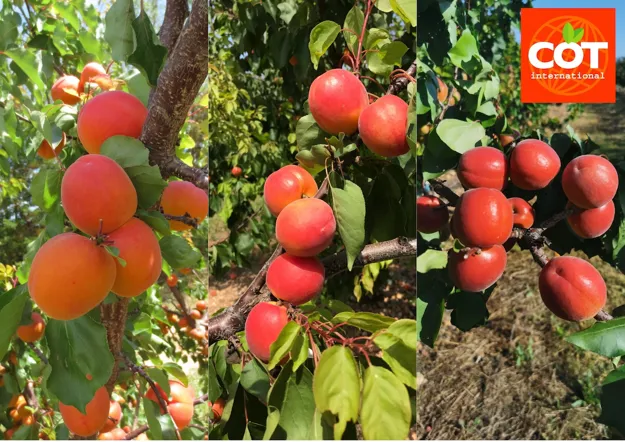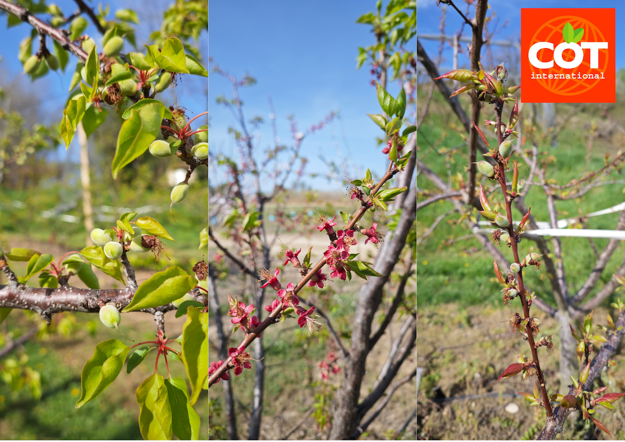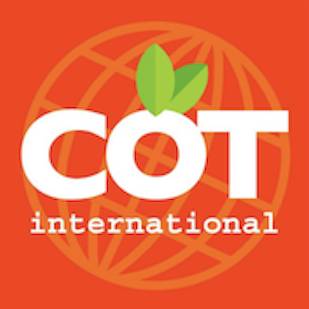Generally speaking, apricot volumes are expected to drop this year in Europe. In France, the situation is highly heterogeneous, depending on the production basin. Pascal Bassols-Pot, technical and sales manager at COT International, shares his observations from the field. "In the Roussillon region, the trees are very full, which promises a good campaign in terms of volumes. This is quite incredible, given this year's mild winter temperatures and the drought that has been the norm for the past 2 years." The significant return to blossom may seem difficult to explain for some, but it could be that the few cold episodes this winter were simply more qualitative than last year."
"COT International varieties perform well in this production basin, especially the latest varieties such as SMART COT cov, FIESTA COT cov and COCOT cov."
 Left to right: SMART COT, FIESTA COT and COCOT
Left to right: SMART COT, FIESTA COT and COCOT
For the time being, the Roussillon region looks set for a positive campaign, unlike other regions of France like the Rhone Valley, which suffered from highly variable weather conditions. "The season got off to a good start in the Rhone Valley, with beautiful flowering more than 15 days ahead of schedule. Then, hail and heavy rainfall followed, with repeated temperature variations. In December, temperatures even reached 25 degrees during the day, while nights remained cold. Today, we are still struggling to assess the impact of these temperature variations on production." Although climate change is a challenge for all orchards, endemic varieties such as the Bergeron apricots have been suffering the most. These varieties used to be "very well adapted to their production basin but this is less true today."
"We remain confident, however, as we have been able to observe our varieties at different sites and the volumes are satisfactory."
 SMART COT, WINTER COT, DELICOT at the end of March 2024 in the Rhone Valley.
SMART COT, WINTER COT, DELICOT at the end of March 2024 in the Rhone Valley.
In the Gard department, sorting the trees has been extremely difficult, with great heterogeneity depending on the plot. Some growers are seeing a drop in production of up to 50%. At first glance, these figures seem to contrast with the cold episodes that initially seemed sufficient. "We perhaps need to focus on the quality of these cold episodes rather than their length. We will have to review our model for calculating these cold episodes, as it is becoming obsolete in our understanding of tree physiology."
COT International has therefore launched a study of cold weather hours in conjunction with IMIDA (Instituto Murcia de Investigacion y Desarollo Agrario y Medioambiental) in Spain and the AVEC group (Orchard Adaption to Climate Change) in France. The aim is to validate another predictive model of variety adaptation according to production basins, in order to provide producers with the most comprehensive information possible when choosing to plant a new variety for production over the next 15 years.
With the French season arriving 10 to 12 days earlier than in 2023, the Roussillon is well placed to benefit in terms of volume. "Roussillon red apricots also seem to be much more present than last year in terms of volumes. It remains to be seen whether the drought will have a significant impact on sizes. We also remain vigilant with regard to hail, and we are keeping our fingers crossed that the weather will lead to a good harvest for all French producers."
The Gard-based breeding company will be present at MEDFEL on April 25th, especially for the European apricot forecasts, and at the booths of its nursery partners present at the event.
For more information:
Pascal Bassols and Marie Laure Etève
COT International
Mas de la Condamine, Chemin de l'abricot
30230 Bouillargues
Phone: +33-6-08-27-38-82
[email protected]
[email protected]
www.cot-international.eu
